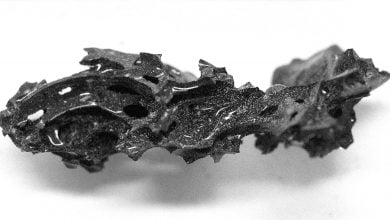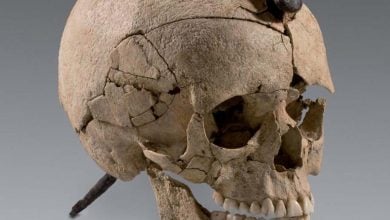Penemuan Nano-Switch: Bagaimana Atom Hidrogen Tunggal Mendorong Reaksi Energi Kehidupan


Sebuah studi baru mengungkapkan 'saklar nano' pada ferredoxin yang mempengaruhi transfer elektronnya, yang dapat mengarah pada kemajuan dalam sensor dan pengembangan obat.
Para peneliti di Jepang telah menemukan mekanisme untuk mengendalikan potensi protein “pembawa elektron” dalam reaksi redoks yang dibutuhkan semua organisme untuk memperoleh energi. Melalui eksperimen, struktur 3D protein yang tepat, termasuk atom hidrogen, ditentukan, dan perhitungan teoretis menggunakan data ini memvisualisasikan struktur elektronik gugus besi-belerang.
Hasilnya mengungkapkan, untuk pertama kalinya, bahwa potensi listrik dari gugus besi-belerang berubah secara dramatis tergantung pada ada atau tidaknya satu hidrogen.[{” attribute=”” tabindex=”0″ role=”link”>atom at an amino acid side chain, a so-called “nano-switch” mechanism. This research, recently published in the journal eLife, not only deepens our scientific understanding of biological reactions but also provides crucial insights for the future development of ultra-sensitive sensors for oxygen and nitric oxide, as well as novel drugs.

Unveiling Electron Transfer in Ferredoxin
Most reactions in living organisms involve the “electrons” transfer, called redox reaction. For example, respiration and photosynthesis can be classified as redox reactions. Some proteins that assist in the electron transfer contain irons and sulfurs.
Ferredoxin is a small protein that holds iron-sulfur clusters inside it and is known as the “electron carrier” in living organisms. It is a universal protein thought to be present in almost all living organisms; however, the mechanism by which ferredoxin stably carries electrons has remained a mystery to date.

Breakthroughs in Structural Biology
In this study, the researchers conducted experiments using the Ibaraki Biological Crystal Diffractometer (iBIX) at the Materials and Life Science Experimental Facility (MLF) in the Japan Proton Accelerator Research Complex (J-PARC) and succeeded in determining the precise three-dimensional structure of a ferredoxin at the hydrogen atomic level in experiments using a neutron beam. Visualizing hydrogen atoms in protein molecules using neutrons is extremely difficult, and only less than 0.2% of the entire protein three-dimensional structure database (Protein Data Bank; PDB) has been reported.

Insights into Electron Transfer Mechanisms
Theoretical calculations using experimental geometry, including hydrogen atoms, were performed to elucidate the electronic structure of the iron-sulfur cluster in the ferredoxin. As a result, it was revealed, for the first time, that an amino acid residue (aspartic acid 64) located far from the iron-sulfur cluster has a significant effect on the probability of electron transfer in the iron-sulfur cluster and plays a role like a switch that controls the electron transfer in ferredoxin. Furthermore, it was shown that the mechanism is universal in various organisms.
The results will not only deepen our scientific understanding of biological reactions but also provide a major clue to the future development of ultra-sensitive sensors for oxygen and nitric oxide and novel drugs.
Reference: “Protonation/deprotonation-driven switch for the redox stability of low-potential [4Fe-4S] ferredoxin” oleh Kei Wada, Kenji Kobayashi, Iori Era, Yusuke Isobe, Taigo Kamimura, Masaki Marukawa, Takayuki Nagae, Kazuki Honjo, Noriko Kaseda, Yumiko Motoyama, Kengo Inoue, Masakazu Sugishima, Katsuhiro Kusaka, Naomine Yano, Keiichi Fukuyama, Masaki Mishima , Yasutaka Kitagawa dan Masaki Unno, 9 Desember 2024, ehidup.
DOI: 10.7554/eLife.102506.2




